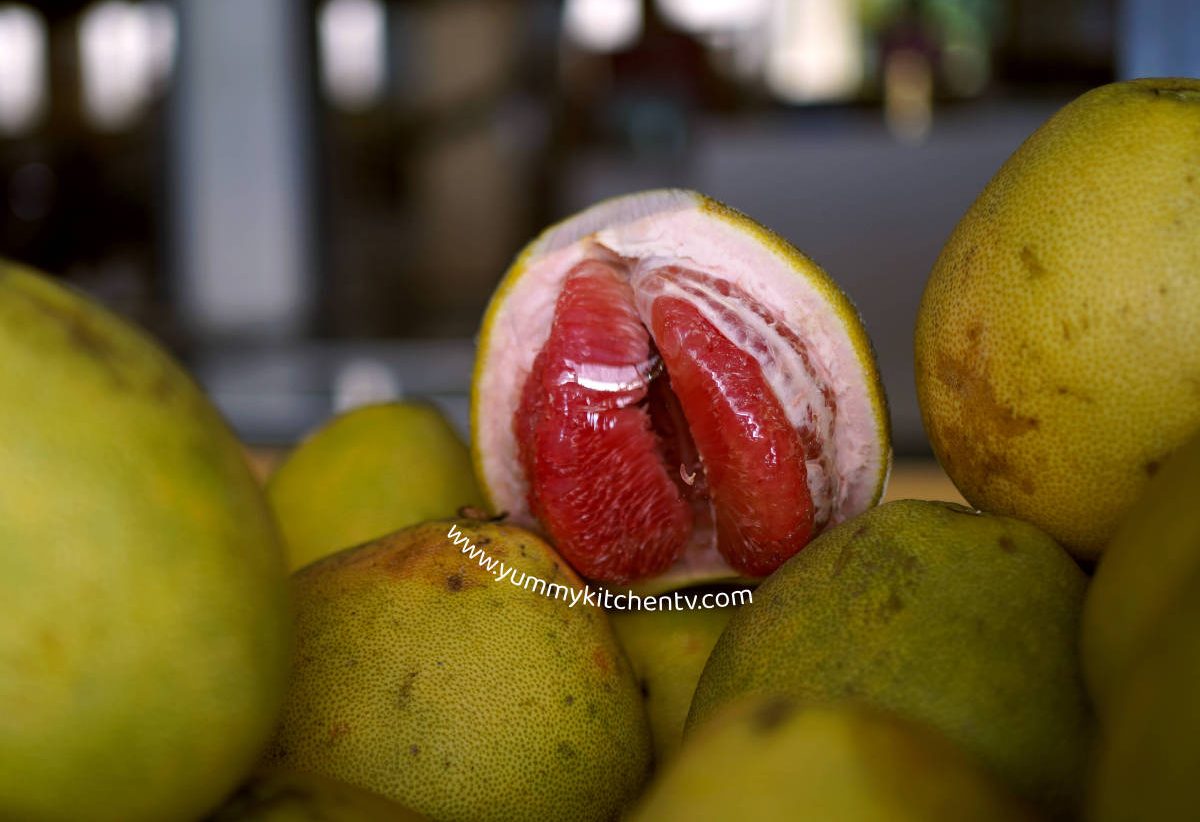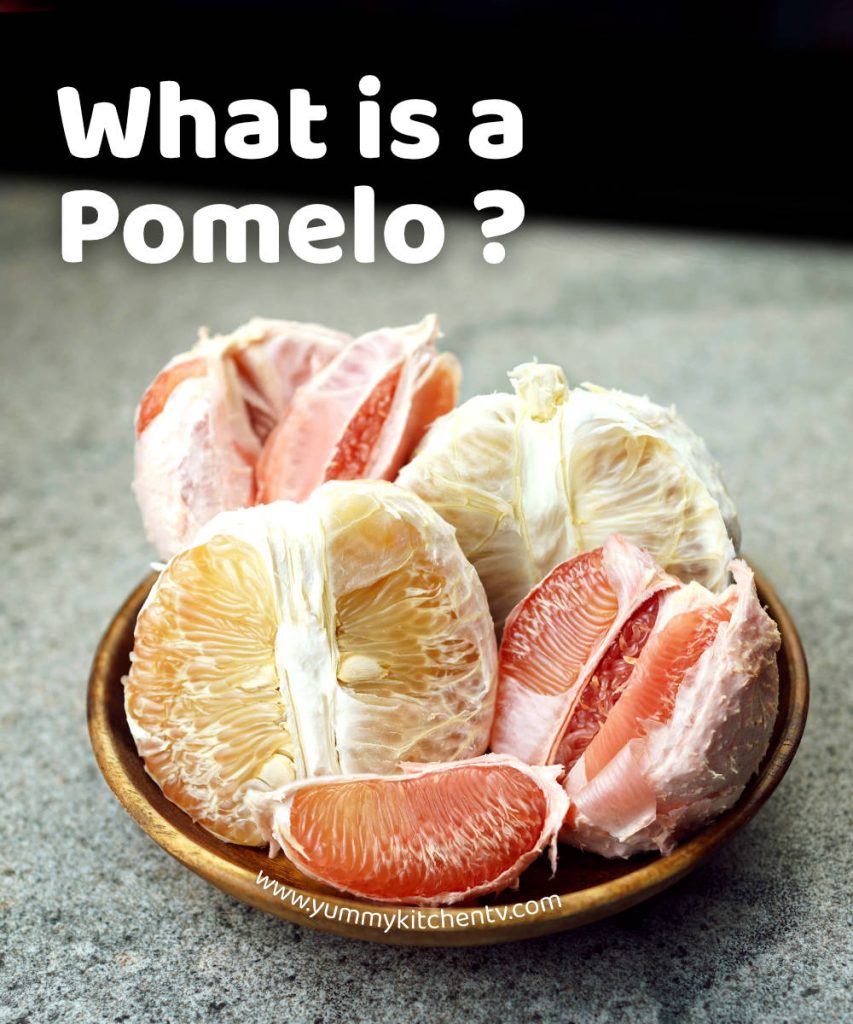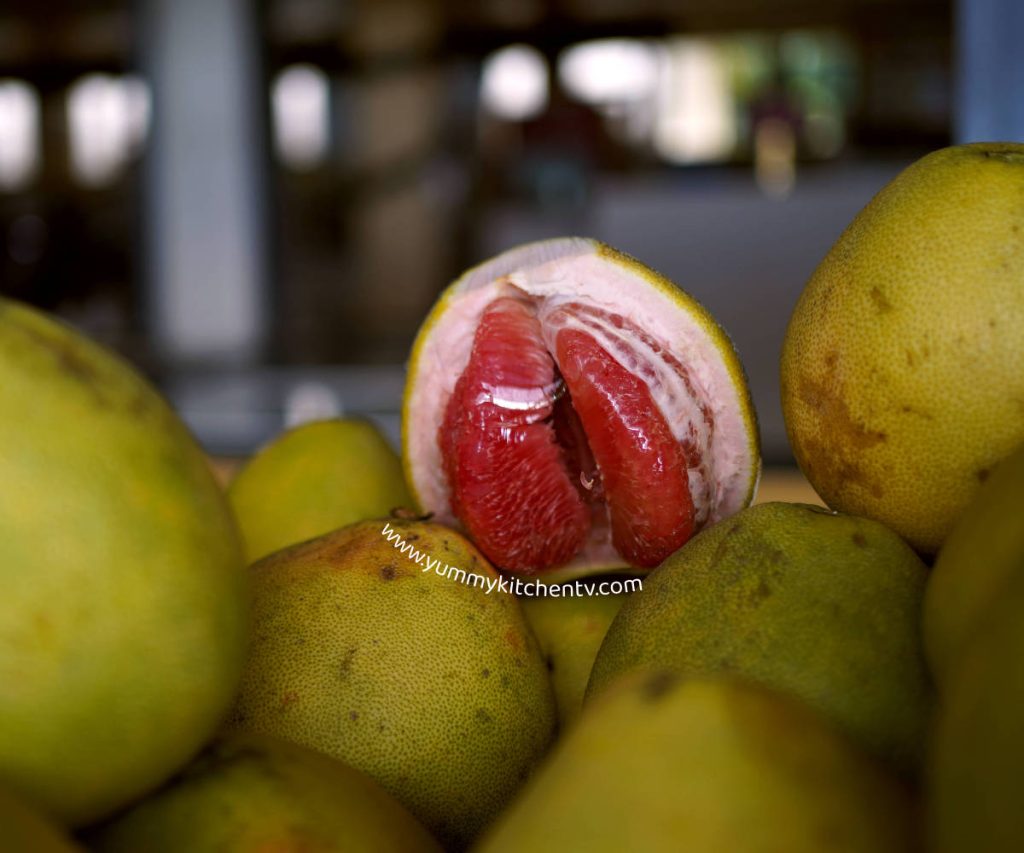The Pomelo fruit, is a natural non-hybrid Asian citrus fruit that’s highly nutritious, packed full of vitamins, minerals, fiber, protein and antioxidants. A low calorie fruit, compared to other fruits in the citrus family, these have a less acidic and sour taste, are less juicy, but sweeter than a grapefruit.
A Short Introduction
The Pomelo, also called ‘pommelo’ ‘pummelo’, ‘shaddock’, or Chinese grapefruit is part of the largest citrus Rutaceae family. A close relative to the grapefruit, pomelos outwardly look like a yellow or green pear shaped fruit, when sliced open you’ll find a thick sometimes thin pale rind that you’ll need to slice through, or remove with your hands before getting to the pale yellow, pink, or a graduation from pink to red pulp. These can grow to the size of a cantaloupe or larger, and taste similar to a grapefruit, while less juicy, these are sweeter. You can find these consumed in many Southeast Asian households, and less commonly in the United states.
How to eat Pomelo
- First, wash the pomelo in running water. Then pat dry with a cloth or kitchen towel.
- Optional, take a knife and slice the top and bottom.
Option 1
- With a knife, slice across the fruit. tug and peel the the skin till you find the pink or pale yellow ‘meat’ covered in rind.
- Take the rind off by pulling outwards from the middle with your hands, similar to handling a poncan.
- Breaking them into sections, then peeling off the rinds, taking the seeds out, before consuming.
Option 2
- slice 1” deep cuts around the body lengthwise before peeling the skin till you find the ‘meat’ covered in rind.
- Shave off the outer rinds with a knife. Then break it apart from the middle.
- Separate into sections from the inner rinds, remove any small seeds before consuming.
*It’s recommended to use your hands (option 1) to gently pull the rind off instead, doing so will prevent wasting a lot of the ‘meat’.
Pomelo Benefits
While the unpeeled Pomelo fruit might not be as popular in many western countries, once cut, you might find them familiarly added into salads for that burst of sweetness and pop of color. But aside from it’s attractive looks, this sweet citrus fruit has a lot to offer, containing antioxidants, vitamins and minerals and many more like the list below:
- An excellent source of Vitamin C, helps with immunity and cell damage.
- Filled with insoluble fiber to meet your needs. Great for constipation and make for great gut health. Fruit fiber in pomelo is also eaten to improve bone density and weight maintenance.
- Consuming fiber has also been proven to help against brain damage and chronic diseases.
- Rich in antioxidants, as well as other compounds also found in other citrus fruits. These help reduce the risk of cancer and are known to be an anti-aging agent.
- The antioxidant, lycopene is also found in pomelo. These are commonly found in tomatoes and are eaten for its anti-inflammatory effects.
- Promotes weight loss, if consumed in the correct amount. For such a large volume of ‘meat’ for a big fruit, it only has 230 calories which many don’t even finish in one go.
Pomelo, Davao’s grapefruit
Pomelo or ‘suha’ in the Philippines is usually in season between the months of November to January, with Davao being the main producer of this big sweet fruit due to the favorable climate and soil of the province. These are eaten as a snack with or without some salt after lunch or dinner, or even at midnight for the more health conscious. Sometimes added into salads for texture, sweetness, and color, and sometimes albeit rarely, turned into juice form or concentrate.
With the recent popularity of superfoods, many people are vying to have a better diet and lifestyle. There are now so many ways to add fruits and vegetables into the dish, making deliciously yummy and presentable recipes. For the pomelo, aside from eating it as a snack and salad topper, other recipes have used this sweet fruit as a topping for sweet and savory noodles, part of a rice paper shrimp filled appetizer, topping for meat based rice meals or, seldom added to marinades. Turned into desserts like lemon-pomelo granita, jams, marmalade, and drinks like pomelo lemonade, mojitos, palomas, and other cocktails. Try out and enjoy this tasty vibrant fruit!








